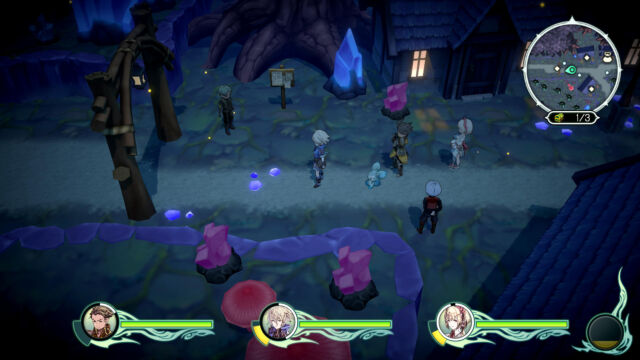Trinity Trigger Import Impression
This is a game that has a lot going for it, and it’s a shame that this potential is not fully met.
Back in June, I had a pleasant surprise in the form of the demo for Trinity Trigger, the latest nostalgia-fueled offering from FuRyu. It was unmistakably inspired by Secret of Mana in its combat, but more refined. The demo only showed the action in a single zone, the snowy forest of Hopelahd with its spear-shaped dungeon, and any plot before or after that was left ambiguous. I was intrigued and decided to pick up a copy of the full game when it made its Japanese debut in September.
All I can say now is that the developers could have done better by the premise.
The plot of Trinity Trigger has some excellent points in its foundation. Centuries ago, a war between the pantheons of Chaos and Order rained disaster down upon the world, with divine weapons crashing to the earth and drastically altering the realms around them. The snowy region from the demo was permanently winterbound not because of its geographical location but rather because it is now home to the spear of the God of Winter, which stands as a tower dungeon countless stories tall. The major dungeons of each area are likewise sections within fallen armaments of former divine grace, now filled with monsters to guard the sacred altars within them. Adventurers known as Bringers summon spirit beasts known as Triggers to be both partner and weapon, and then seek out those altars to expand their Trigger’s panoply of weapon forms. Exploring the dungeons and gaining new Trigger forms is thus one pillar of the game’s narrative.
The other pillar is the ongoing feud between Order and Chaos, carried out in the mortal world by two champions, who are foretold to seek one another out for an epic showdown that permanently decides the matter. Neither way does this end well for the mortal world, and in previous iterations the issue was settled by an outside group assassinating one of the champions before things got too far. This does not sit well with the protagonist, who happens to be the unwilling Champion of Chaos.
Looking at this, it would seem that Trinity Trigger has some good plot going for it. Unfortunately, it fails to stick the landing, or even the start of its routine, with any appreciable grace. The narrative relies too much on the protagonist being told he’s in danger, without bothering to show how. There’s no actual danger of assassination for quite a while into the game. The flow of the plot makes a steady line from dungeon to dungeon with few diversions early on, and there could have been more variety in area layouts, or more areas not directly related to titanic weaponry.
Gameplay-wise, Trinity Trigger is still definitely an homage to Secret of Mana, with better attack chaining, action economy gauges, and special moves. Weapon forms are gated by by dungeon and by Trigger element, so it won’t be until late in the game, and with a few specific side quests completed, that all three playable characters have access to everything. As well, the game hands out enough weapon-boosting experience to be useful without making it easy to maximize everything. Sadly, I have not had the opportunity to try the co-op mode, but the option sits at the bottom of the main menu, taunting my lack of in-person gaming friends. At least the party AI is smart enough to avoid the telegraphed danger zones whenever an enemy is about to unleash a major attack.
One mechanical element to the boss battles is that the big monsters will always possess a sort of shield that needs to be worn down before they are stunned and vulnerable. More often than not, this shield has one or two specific vulnerabilities to certain weapon types. While a good idea in concept, it doesn’t come together well, and later in the game there are bosses with no vulnerabilities and enough shielding to tank eight to ten times their total hit point count in damage before they’re defeated. That more than anything has prevented me from finishing Trinity Trigger at this point, though I am willing to jump back into it in the future.
As it is, this is not a long game, with a run time of maybe twenty hours from start to finish, including most side quests. It really needed more flavor, more side material, more enemy types (especially among the bosses), earlier and more frequent appearances by the antagonists, and in general a better handling of both the plot points and the battle mechanics. This is a game that has a lot going for it, and it’s a shame that this potential is not fully met. I did enjoy it, however, and I hope that FuRyu gives this style of game another go. With some more polish and a better grasp of dramatic structure, things could get interesting for those nostalgic for games of yore.















Recent Comments